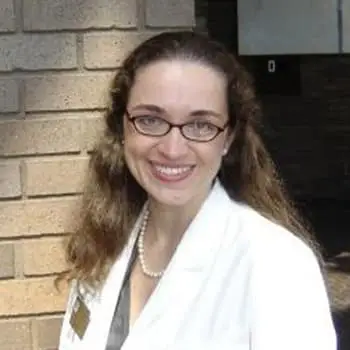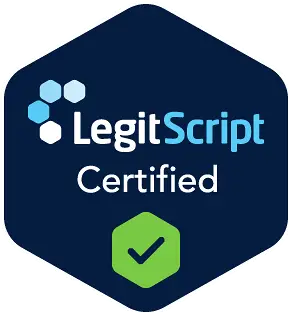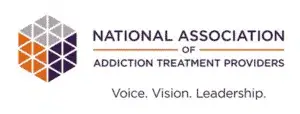Many treatment options exist for alcohol and opioid use disorders. One of the cornerstones of addiction treatment in recent years is medication-assisted treatment, or MAT. Medication-assisted treatment can help people with alcohol or opioid use disorders begin and maintain a long-term recovery.
What Is Medication-Assisted Treatment?
Medication-assisted treatment (MAT) is a treatment strategy that helps people recover from an addiction to alcohol or opioids. MAT is a useful tool in helping people avoid relapses, which are common in recovery. Relapses are even more likely to occur when a person does not participate in rehab for at least 90 days.
In MAT, a person typically takes a medication that either stops cravings or provides a substitute that is safer than alcohol or opioids. In this way, MAT can help people achieve and maintain their recovery from substance abuse. MAT is one component of a comprehensive recovery program that can include detox, rehab and therapy to help a person maintain sobriety.

Insurance May Pay For Medication-Assisted Treatment
Use our confidential insurance verification form to see if your insurance will cover treatment at The Recovery Village Palmer Lake.
This Season, Give Yourself the Gift of a Fresh Start.
Whether you are struggling with addiction, mental health or both, our expert team is here to guide you every step of the way. Don’t wait— reach out today to take the first step toward taking control of your life.
Medication-Assisted Treatment for Alcohol
Alcohol can interrupt many components of your brain and body chemistry. When you drink, the feel-good chemical dopamine is released in your brain. Dopamine plays a major role in the brain’s reward pathway, which is linked to addiction. Drinking also causes your brain to release gamma-aminobutyric acid (GABA), a chemical that slows the brain’s activity and causes relaxation. When you drink over a long period of time, your brain will adapt to the extra dopamine and GABA it expects from drinking. This leads to alcohol withdrawal symptoms when you stop drinking.
Quitting drinking can once again throw your brain and body chemistry into disarray. Medications for alcoholism can help you stay sober by easing the way your brain and body react to alcohol’s absence.
Medications For Alcoholism
So far, the FDA has approved three medications to treat chronic, severe alcohol abuse. These medications are disulfiram, naltrexone and acamprosate.
Disulfiram
Disulfiram (Antabuse) is an oral tablet prescribed to people who no longer drink but want help staying sober. Because the drug makes you feel sick when you drink, it can help people who want extra motivation to refrain from drinking.
Disulfiram works both by blocking euphoria from drinking and interfering with the chemical breakdown of alcohol. Normally, your body converts alcohol into acetaldehyde and then acetic acid. Disulfiram interrupts this process, blocking the enzyme acetaldehyde dehydrogenase that converts acetaldehyde to acetic acid. Acetaldehyde can make you feel ill and cause unpleasant symptoms like severe headaches, vomiting and weakness.
Naltrexone
Naltrexone (ReVia, Vivitrol) is an opioid-receptor antagonist that is frequently used to help treat alcohol abuse. Naltrexone is most effective in people who are no longer drinking and want help staying sober.
Naltrexone works by reducing the pleasure you feel from drinking. Specifically, the drug prevents the brain from releasing too much of the feel-good chemical dopamine when you drink. Naltrexone comes as a daily oral tablet and as a long-acting injectable.
Acamprosate
Acamprosate (Campral) helps a person stay sober and reduces withdrawal symptoms. The drug works by reducing the amount of glutamate in the brain. When a person stops drinking, the amount of glutamate in their brain often increases, which contributes to withdrawal symptoms. By reducing the amount of glutamate in the brain, acamprosate helps a person avoid withdrawal symptoms that might otherwise cause them to relapse. The medication comes as an oral tablet taken three times a day.
Medication-Assisted Treatment for Opioid Use Disorder
Opioids typically work on the mu-opioid receptors of the brain. They also trigger the brain’s reward pathway, which increases the levels of feel-good neurotransmitters like dopamine. Over time, the body adjusts accordingly and becomes dependent on the opioids. As a result, suddenly stopping opioids can cause significant withdrawal symptoms.
MAT for opioid use disorder can help to ease withdrawal symptoms and prevent relapse. Unlike many MAT therapies for alcoholism, which are often only started once a person is sober, most MAT therapies for opioid use disorder can be started as soon as a person starts to detox from opioids.
Opioid Addiction Medication
Expert guidelines recommend the use of MAT in opioid use disorder treatment. Three main medications are often prescribed as MAT when a person is dependent on opioids: methadone, buprenorphine and naltrexone.
Methadone
Methadone (Dolophine, Methadose) is widely considered a first-line treatment for opioid use disorder. Although available in several formulations, it usually comes as an oral liquid when prescribed for MAT.
Methadone is a long-acting opioid that works on the brain’s mu-opioid receptors similarly to other opioids. However, because it is so long-acting, methadone does not cause a high. Instead, methadone prevents withdrawal symptoms and cravings, and it stops someone from getting high if they relapse and take an illicit opioid.
Buprenorphine
Buprenorphine (Belbuca, Buprenex, Butrans, Probuphine, Sublocade) is an opioid like methadone. Like methadone, it helps prevent withdrawal symptoms and cravings, and it prevents someone from getting high if they relapse.
Although sometimes prescribed on its own, buprenorphine is often sold as a combination drug with the opioid reversal agent naloxone (Bunavail, Suboxone, Subutex, and Zubsolv). Naloxone helps ensure that buprenorphine is taken as directed and is not misused. Naloxone is inert when buprenorphine is taken by mouth. However, if someone tries to dissolve and inject the buprenorphine, the naloxone component activates and blocks the opioid’s effects.
Buprenorphine comes in oral forms (orally disintegrating tablets and strips) and long-acting injectable forms (Probuphine, Sublocade).
Naltrexone
Naltrexone (ReVia, Vivitrol) works very differently from methadone and buprenorphine. Unlike both of those drugs, which are opioids, naltrexone is an opioid antagonist that blocks opioids from attaching to mu-opioid receptors in the brain.
As an opioid blocker, naltrexone use can trigger withdrawal if you have opioids in your system. As a result, naltrexone should only be taken when opioids are completely out of your system, which can take up to 14 days after the last dose. Naltrexone is available as an oral tablet and as a long-acting injection.
Medication-Assisted Treatment Options for Pregnant Women
When a person who struggles with opioids or alcohol becomes pregnant, addressing the substance use disorder is important for the baby’s health. MAT treatment may be an option in some cases.
For someone who struggles with opioids, treatment with methadone or buprenorphine products is considered first-line therapy when a pregnant woman seeks treatment. Less data supports the use of naltrexone, so it is not commonly used unless the woman is already taking it.
In those who struggle with alcohol, MAT is typically not an option during pregnancy. Experts recommend against MAT for alcohol abuse during pregnancy unless there is a co-occurring disorder that requires treatment.
Is Medication-Assisted Treatment Effective?
MAT is effective for both alcohol and opioid abuse. Research shows that MAT helps to prevent both relapse and death from alcohol use. Similarly, MAT helps to prevent relapse in people recovering from opioid use disorders.
About the MAT Program at The Recovery Village Palmer Lake
At The Recovery Village at Palmer Lake, we incorporate MAT as medically appropriate during all stages of the recovery process. For those who struggle with opioid use disorder, MAT may be initiated during detox as they are weaned from other opioids. Since most MAT medications for alcohol abuse are started once the person is sober, these treatments may be started when the person has stopped drinking. MAT for either drug can continue throughout the rehab process.
MAT is just one element of the recovery process, which aims to help both the body and mind to heal. To help clients reach that goal, The Recovery Village at Palmer Lake offers a full continuum of care alongside calming activities and amenities like yoga, drama therapy, walking trails and more.
Working with your care team, you will decide whether to continue MAT after rehab as you start your new, substance-free life.
Does Insurance Cover Medication-Assisted Treatment?
Most insurance providers will help cover medication-assisted treatment. This is because the Affordable Care Act requires insurance plans to help pay for substance use disorders. Insurance plans accepted by Palmer Lake Recovery include:
- Cigna
- Health Care Solutions Group
- Humana
- UC Health
- First Health
- First Choice
- Medical Mutual
- Rocky Mountain Health
- ClaimBridge Administrators
- Blue Cross Blue Shield Anthem
- MultiPlan
- Preferred Medical
- America’s Choice Provider Network (ACPN)
Do I Qualify for Medication-Assisted Treatment in Colorado?
MAT is offered as medically necessary and must comply with both federal and state regulations.
Your doctor will be able to discuss with you whether MAT is a good choice based on your medical history.
Get Started With Medication-Assisted Treatment in Colorado Today
The Recovery Village at Palmer Lake offers comprehensive detox and rehab options for both alcohol and opioid use disorders. Our intake experts can work with you to help determine whether MAT is right for you. Contact us today to learn more about treatment programs that can lead you to a healthier, substance-free future in recovery.









